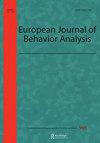Comparing compound pairs and single stimuli during match-to-sample to establish arbitrary stimulus classes with adults of typical development
引用次数: 0
Abstract
ABSTRACT Equivalence classes are typically established by teaching arbitrary conditional discriminations with discrete single stimuli as samples and comparisons. The current study was the first to use compound stimuli as both samples and comparisons during training of conditional relations. We compared compound-to-compound stimuli MTS training with the more typical single-to-single stimuli training to establish two 4-member arbitrary stimulus classes with adults. A pretest-train-posttest between-groups experimental design was used. Compounds consisted of side-by-side pairs of individual (single) abstract symbols. A pretest and posttest consisting of MTS trials evaluating all single-to-single, single-to-compound, compound-to-single, and compound-to-compound relations were used to compare the effectiveness of the two training procedures. In addition, participants sorted cards depicting all single stimuli into piles both before and after MTS training. Results showed that stimulus classes were established with similar accuracy regardless of the training used. However, the compound-to-compound group participants required significantly fewer trials and training blocks to demonstrate class emergence than participants in the single-to-single group. In addition, the compound-to-compound group participants emitted significantly fewer errors during MTS training. We discuss how these results may inform use of stimulus equivalence procedures in mainstream settings (e.g., teaching academic content).比较典型发育成人在配对-样本过程中的复合刺激对和单一刺激,建立任意刺激类别
本文章由计算机程序翻译,如有差异,请以英文原文为准。
求助全文
约1分钟内获得全文
求助全文

 求助内容:
求助内容: 应助结果提醒方式:
应助结果提醒方式:


